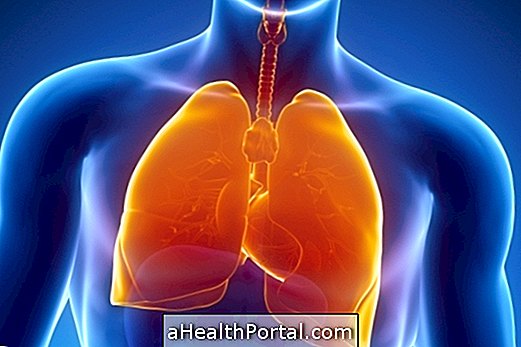Berylliosis is a lung disease caused by inhalation of dust or gases that contain beryllium, a chemical that causes inflammation of the lung and generates symptoms such as dry cough, shortness of breath and chest pain, which can lead to death if treatment is not started quickly.
This disease mainly affects workers in the aerospace industry and people who live near beryllium refineries, so to prevent contact with this substance, it is important to have some care like changing clothes after work or showering before going home, for example.
The treatment of berylliosis is usually done at the hospital with the use of corticosteroids directly in the vein and oxygen mask, but in more severe cases surgery may be necessary to transplant the lung.

Main symptoms
Excessive or prolonged exposure to beryllium may cause symptoms such as:
- Dry and persistent cough;
- Feeling of shortness of breath;
- Chest pain;
- Red spots on the skin;
- Sore throat;
- Coriza in the nose.
These symptoms are most common in people who experience a sudden and exaggerated exposure to beryllium, however, beryllium can also develop in workers from factories who work with the substance and in these cases, the symptoms may take a few months or years to appear .
In cases of very prolonged exposure to beryllium, nodules appear in the lungs, in addition to symptoms such as persistent fever, constant chest pain, night sweats, weight loss, sore throat and difficulty breathing that worsens over time.
What Causes Berylliosis
The main cause of Beryliosis is the inhalation of smoke or dust with residues of beryllium, however, this intoxication can also happen due to contact with the skin.
Because beryllium is used in some specific types of industry, the people at greatest risk of exposure are those who work in the aerospace, electronics, or nuclear industries.
How to prevent exposure to beryllium
To avoid exaggerated exposure to beryllium, care should be taken to:
- Wear protective masks ;
- Have only clothes to wear at work, to avoid taking contaminated clothing home;
- Take a shower after work and before going home.
In addition, it is important that the workplace has adequate ventilation to prevent excessive build-up of beryllium particles in the air.
Check out other ways to protect yourself from heavy metal contamination.
How to confirm the diagnosis
The diagnosis of berylliosis is usually made by the pulmonologist when there is a history of beryllium exposure with signs of persistent coughing and difficulty breathing that worsen without any other apparent cause.
In some cases, the doctor may still order an x-ray or even a lung biopsy in which a small sample is taken from the organ to be evaluated in a laboratory to identify the presence of the substance.
How is the treatment done?
Treatment should be started as soon as the first symptoms appear or whenever the respiratory capacity is decreased.
So it is usually the treatment for Beryliosis is started with the use of corticosteroids, such as Prednisone, to decrease inflammation in the lung and improve symptoms. In addition, oxygen may be needed at the hospital, especially in cases of sudden exposure to beryllium.
Even in the most severe cases of chronic exposure, in which several nodules and other changes have occurred in the lung, lung capacity may be greatly reduced and, therefore, the only form of treatment recommended is lung transplantation.




















